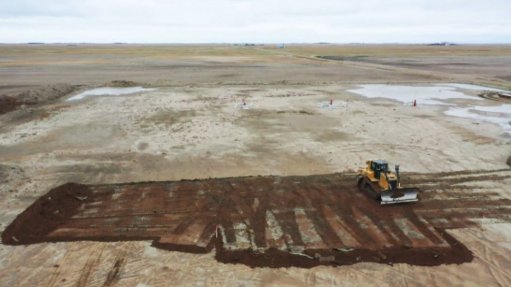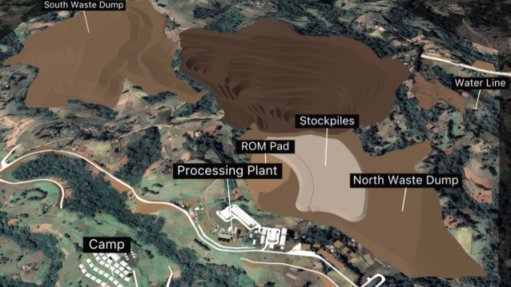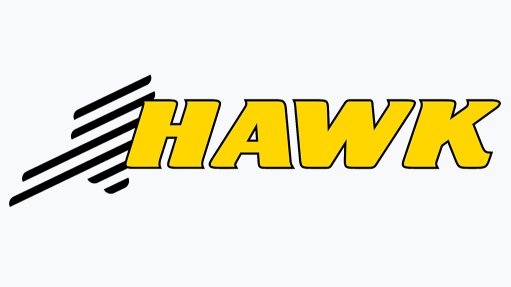Illicit ruby, emerald mining robbing host countries of inherent true value – Gemfields
Gemstone miner Gemfields says an analysis of existing data on the supply of rubies and emeralds highlights the “alarming” extent to which host-mine countries are being robbed of the true value of their coloured gemstone resources.
Gemfields notes that the vast majority of coloured gemstones are extracted by artisanal mining, both formal and informal, for which scant reporting standards exist.
In addition, coloured gemstones often originate from countries that do not have strong reporting standards.
Developing greater efforts to combat the illicit trade is, therefore, imperative, it asserts.
These, and other key findings, are laid out in Gemfields’ ‘Global Emerald & Ruby Supply: Analysing Market Data’ report, which also finds that data relating to coloured gemstone supply, demand and movement is both hard to come by and unreliable, and that further data must be made available to improve this.
The report is intended to extend the understanding of the responsible gemstone industry through more transparent and available data relating to international coloured gemstone supply.
The report also finds that available data is skewed, as gemstone values are easily underdeclared at the export phase, with rough gems often sold for prices well below market value.
To remedy this, Gemfields suggests setting the value of rough gemstones at the time of foreign sale, rather than at the point of export.
In recognition of the challenges to data reliability, Gemfields notes that its Zambia-based Kagem mine is the world’s single largest producing emerald mine.
Similarly, Mozambique – where Gemfields has its Montepuez ruby mine (MRM) – provides about 40% of the world’s rubies and has supplied between 50% and 70% of the yearly stock of faceted-quality rubies.
However, Gemfields notes that there is little data available other than that provided by it through its MRM, and hence there is no certainty of the size of the illicit trade.
Nonetheless, Gemfields invites other gemstone industry players and sources to collaborate and to help improve the strength of related data, as well as work together to compile a subsequent research report later this year.
“What our initial research highlights is how far the coloured gemstone industry still has to go in reaching the level of transparency that end consumers deserve,” says Gemfileds CEO Sean Gilbertson.
He adds that, without knowing the journey each gemstone has taken, jewellery customers’ concerns regarding slavery, smuggling, child labour, tax avoidance and fair pricing at export cannot be allayed.
INACCURATE DATA
Gemfields reports that existing gemstone data can be inconsistent in terms of gemstone forms, for instance, rough versus cut-and-polished; and units of measurement, with some export and production data presented in terms of quantity – which can be stated in kilogrammes, carats or value (typically dollars), but rarely with both weight and value together.
This presents a significant issue, as gemstones vary tremendously in value depending upon their quality, which is, in turn, determined by subtle variations in factors such as clarity and colour, as well as by their weight.
With its Zambian and Mozambican mines, Gemfields is able to compare available data sources to its own production and sales figures – revealing significant gaps in the overall understanding of the coloured gemstone market.
A “glaring issue” in the coloured gemstone industry is what Gemfields says is the disparity in the value assigned to a gemstone, particularly in its rough form, especially within the producing country.
In this regard, a 30-million-fold difference between the value of the highest and lowest value products mined at MRM (being $600 000/g and $0.02/g) has profound implications for deposit-hosting nations.
Permitting the price to be set at the point of export from the host country inevitably leads to acute under-pricing, given how subjective pricing is. This, in turn, highlights the fact that official export data is likely to seriously understate the true value of the gemstones that leave a deposit-hosting country, explains Gemfields.
Setting the value of rough gemstones at the time of foreign sale, rather than at the point of export from the host country, would remedy this.
The miner points to the balance of payments data published online by the Bank of Mozambique, which provides a useful rubies, sapphire and emerald category, reflecting Mozambique’s combined monetary inflows from these three gems since January 2011.
Despite only mining one of the three gemstones (rubies), production from MRM accounts for only 94% of Mozambique’s official monetary inflows of rubies, emeralds and sapphires over the last decade, from January 2011 to June 2021.
This is to be considered with the commencement in 2009 of a well-documented “ruby rush” in the Montepuez area involving thousands of artisanal and illegal miners, and ongoing mining efforts of both artisanal and formalised mining operations in the Montepuez area.
Prior to MRM’s first auction in June 2014, and since January 2011, when the data commences, cumulative exports of rubies, sapphires and emeralds across all Mozambican producers total less than $1-million. Gemfields notes that cash exceeding $10 000 must be declared upon entry into Mozambique.
Therefore, the miner explains that, with the exception of MRM, Mozambique’s emerald, ruby and sapphire wealth has “simply evaporated” over the past decade.
Article Enquiry
Email Article
Save Article
Feedback
To advertise email advertising@creamermedia.co.za or click here
Press Office
Announcements
What's On
Subscribe to improve your user experience...
Option 1 (equivalent of R125 a month):
Receive a weekly copy of Creamer Media's Engineering News & Mining Weekly magazine
(print copy for those in South Africa and e-magazine for those outside of South Africa)
Receive daily email newsletters
Access to full search results
Access archive of magazine back copies
Access to Projects in Progress
Access to ONE Research Report of your choice in PDF format
Option 2 (equivalent of R375 a month):
All benefits from Option 1
PLUS
Access to Creamer Media's Research Channel Africa for ALL Research Reports, in PDF format, on various industrial and mining sectors
including Electricity; Water; Energy Transition; Hydrogen; Roads, Rail and Ports; Coal; Gold; Platinum; Battery Metals; etc.
Already a subscriber?
Forgotten your password?
Receive weekly copy of Creamer Media's Engineering News & Mining Weekly magazine (print copy for those in South Africa and e-magazine for those outside of South Africa)
➕
Recieve daily email newsletters
➕
Access to full search results
➕
Access archive of magazine back copies
➕
Access to Projects in Progress
➕
Access to ONE Research Report of your choice in PDF format
RESEARCH CHANNEL AFRICA
R4500 (equivalent of R375 a month)
SUBSCRIBEAll benefits from Option 1
➕
Access to Creamer Media's Research Channel Africa for ALL Research Reports on various industrial and mining sectors, in PDF format, including on:
Electricity
➕
Water
➕
Energy Transition
➕
Hydrogen
➕
Roads, Rail and Ports
➕
Coal
➕
Gold
➕
Platinum
➕
Battery Metals
➕
etc.
Receive all benefits from Option 1 or Option 2 delivered to numerous people at your company
➕
Multiple User names and Passwords for simultaneous log-ins
➕
Intranet integration access to all in your organisation
















